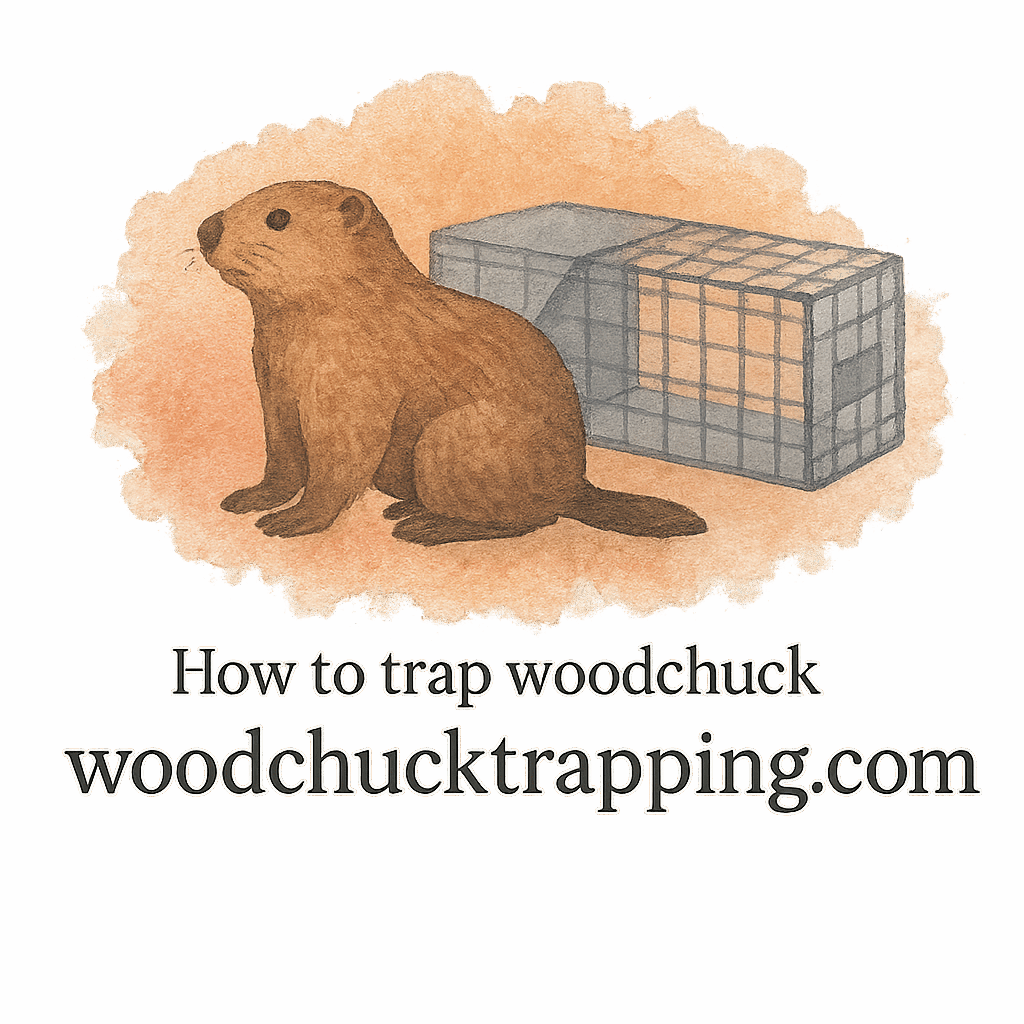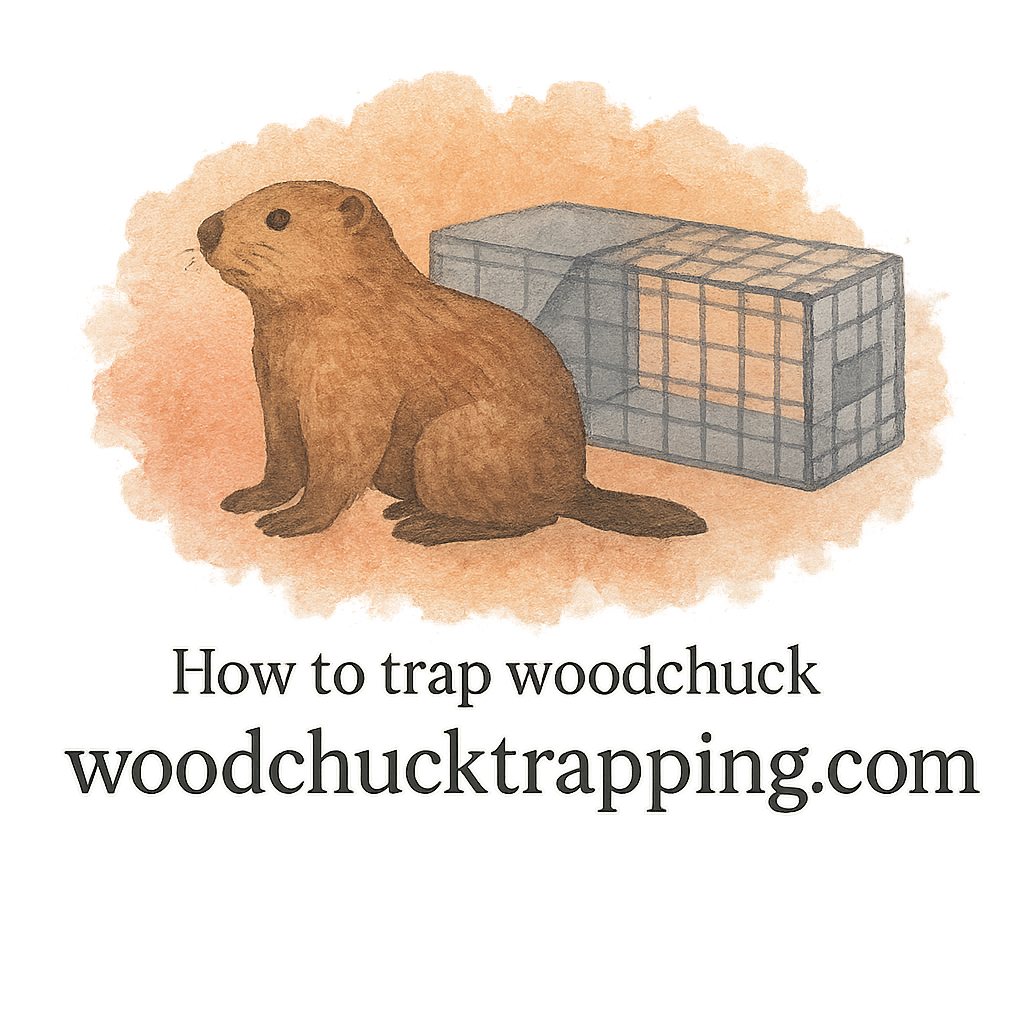Introduction
If you’ve spotted holes in your yard or caught sight of a chunky critter waddling through your garden, chances are—you’re dealing with a woodchuck problem. Also known as groundhogs, woodchucks are notorious for damaging lawns, gardens, and even building foundations with their burrowing habits. While trapping them is often the go-to solution, many DIY trappers make crucial mistakes that render their efforts useless—or worse, harmful.
Let’s break down the 6 mistakes to avoid when trapping woodchucks so you can outsmart these furry escape artists once and for all.
1. Choosing the Wrong Trap
Understanding Different Trap Types
Not all traps are created equal. Many beginners grab the first trap they find at the hardware store without understanding if it’s suitable for woodchucks. A trap that’s too small will frustrate you (and the animal), while a flimsy one could result in escape or injury.
Why Compact Traps Matter
Woodchucks are muscular and strong for their size. Opt for sturdy, compact traps designed specifically for mid-sized animals like them. For small spaces, selecting a trap that balances compactness and strength is key.
👉 Learn more on choosing the right gear from our review hub: Equipment Reviews
🔗 Also check Tag: Compact Traps
2. Using Ineffective Bait or Lure
Common Baiting Mistakes
Think an old apple will do the trick? Think again. Woodchucks are picky. Rotten or dry bait often fails to attract them, and poor placement inside the trap can keep the trigger plate untouched.
Scent Bait and Lure Selection
To really attract a woodchuck, use fresh produce like cantaloupe or corn—and enhance it with scent bait. The goal is to entice with smell before they even see the food.
👉 Dive into pro tips: Baiting & Luring Guide
🔗 Related tags: Scent Bait, Lure, Attract
3. Poor Trap Placement
Signs of Active Burrows
You could have the perfect trap and bait, but if you place it away from burrow entrances or active travel paths, it’s game over. Look for fresh dirt mounds, worn trails, or newly gnawed plants.
📍 See more on identifying burrows and travel signs:

4. Ignoring Safety Laws and Guidelines
Legal Considerations
In many states, trapping wildlife without a permit—or in the wrong season—can land you in legal trouble. Always check your local regulations before setting up a trap.
Humane Trapping Standards
Trapping should be humane and ethical. That means using live-capture traps, checking them frequently, and handling the animals without causing unnecessary stress.
📚 Learn the rules:
5. Mishandling the Trapped Woodchuck
Safe Handling Techniques
Here’s where things get tricky—and potentially dangerous. A trapped woodchuck can scratch, bite, or escape if not properly handled. Always wear heavy gloves and approach the trap from behind.
🐾 More on animal care:
6. Failing to Prevent Future Infestations
Preventative Landscaping and Repairs
Trapping one woodchuck is just the beginning. If your yard still looks like a woodchuck paradise, others will move in. Patch up burrows, install fencing, and clean up food sources.
🛠️ Explore more prevention hacks:
Essential Tools and Gear for Success
Don’t forget your gear! From trap scent to minimal-space setups, having the right tools can be the difference between success and frustration.
🧰 Gear up here:
Best Trapping Techniques to Apply
Want to get results fast? Use proven trapping techniques tailored for woodchuck behavior. Pre-bait traps, camouflage the cage, and don’t forget to anchor it down.
🎯 Master the skills:
Conclusion
Woodchucks might look harmless, but they’re yard-wrecking machines. Luckily, you can trap them efficiently and ethically—if you avoid the common mistakes we covered here. Start with the right gear, follow best practices, and think like a woodchuck (yes, seriously). Your yard will thank you, and so will your peace of mind.
FAQs
1. What’s the best bait for trapping woodchucks?
Fresh fruit like cantaloupe or corn combined with scent bait works wonders.
2. How do I know where to place the trap?
Look for active burrow entrances, dirt mounds, and well-worn animal trails.
3. Are woodchuck traps legal everywhere?
It depends. Always check your local laws before setting traps.
4. How often should I check the trap?
At least twice daily. Humane trapping requires frequent checks.
5. What should I do with a trapped woodchuck?
Wear gloves, cover the trap with a towel, and relocate if legal—or contact a professional.
6. Can I trap woodchucks in a small yard?
Absolutely! Use compact traps and minimal-space techniques.
🔗 Tag: Small Yard
7. What if trapping doesn’t work?
You might be making one of the mistakes above—review your process or consult our full Trapping Guide.


